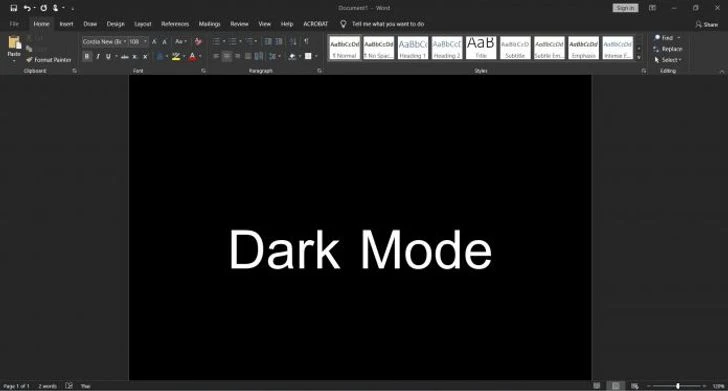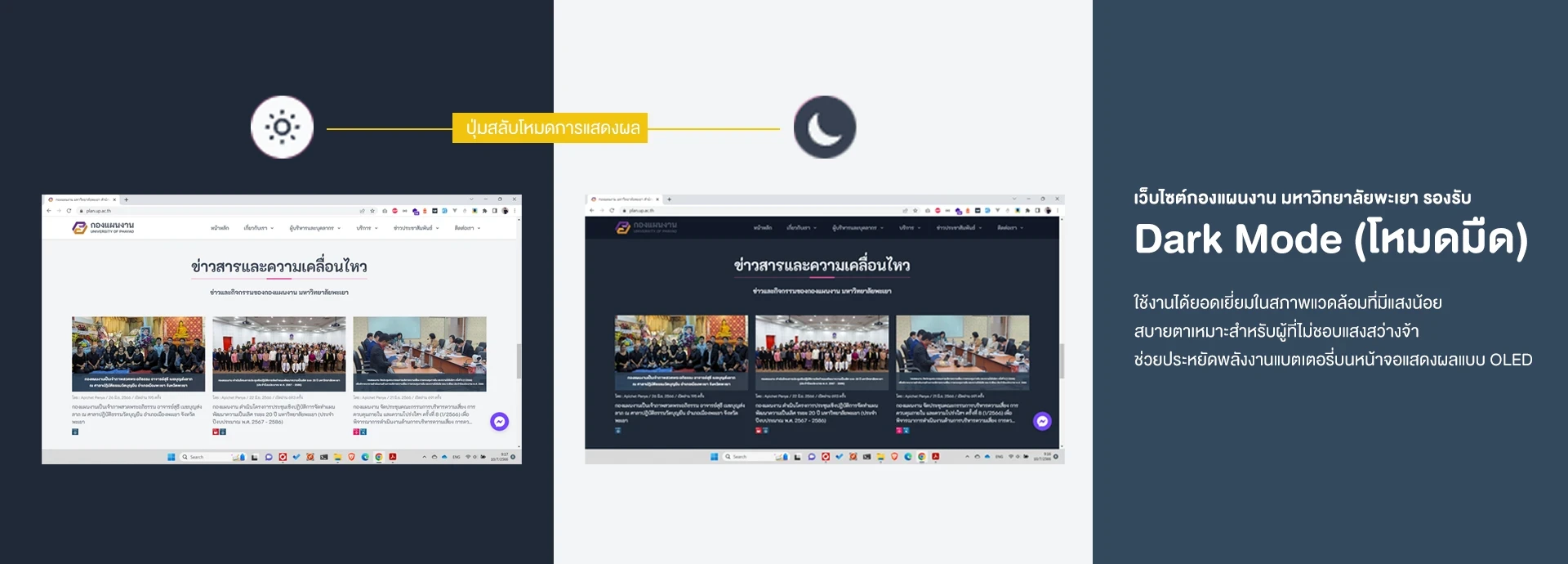In recent times, we may have noticed a growing trend regarding Dark Mode. Dark Mode is a setting that changes the background of a display to black, and it's a feature that more and more websites and applications are adopting.
The reason websites and applications are adding Dark Mode is because it offers significant benefits to users. Chris Hoffman, the Editor-in-Chief of How-To Geek, has highlighted three main advantages of having Dark Mode on websites and applications:
- It works excellently in low-light environments.
- It is easier on the eyes for some users.
- It helps conserve battery power on OLED screens.
Not only are websites and applications adding Dark Mode, but even software like Microsoft Office programs, such as Microsoft Word, offer Dark Mode. This feature can help reduce eye strain when using a computer for extended periods.

Dark Mode
In low-light conditions, such as nighttime, reading white text on a black background is easier than reading black text on a white background. A dark screen reduces brightness in low-light environments, resulting in less glare and minimizing the impact on both the user’s eyes and those around them.
Moreover, Dark Mode is beneficial for individuals with photophobia, or sensitivity to bright light. Intense brightness can trigger discomfort in people with photophobia, causing eye pain, watering, and even headaches or migraines.
For users of OLED (Organic Light-Emitting Diode) screens, changing the background to black can also help save battery life. Google has previously stated that using Dark Mode on YouTube can extend battery life by 15-60%.
However, only a few smartphones, primarily high-end models, feature OLED screens due to their higher production costs. Most smartphones on the market today use LCD screens, which rely on a backlight to illuminate the display. Even when the screen is entirely black, the backlight remains on unless the display is turned off.
On the other hand, OLED screens don’t use a backlight. Each pixel can emit light individually, and black pixels don’t emit any light at all. This is in contrast to LCDs, where the entire screen is lit. Although OLED screens have advantages over LCDs, they also have some drawbacks.
Despite the advantages of Dark Mode, it’s not without its downsides. Adam Engst, a tech writer at TidBITS, mentioned a study that suggests reading white text on a black background for an extended period can cause eye strain. The dark surroundings of the text require more focus, causing the eyes to work harder.
Regardless of these considerations, if you prefer Dark Mode because it feels easier on your eyes, feel free to use it. Dark Mode is simply an option for those who find bright light uncomfortable during long screen sessions; it’s not mandatory for everyone.
Some people switch everything in their life to Dark Mode, and once they do, there’s no going back. They find it hard to return to using bright backgrounds, as it feels too harsh on the eyes.
The Planning Division website of the University of Phayao has recently added a fully functional Dark Mode feature to accommodate users who prefer this option.



















